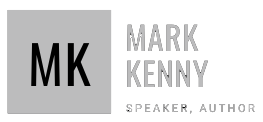When one of my sons was around three years old (he is 20 today), my wife caught him sitting on the counter and literally dropping eggs on the ground. He has more of an engineering mind and I suppose that he just wanted to observe what happens when you drop eggs on the ground. I don’t know why but when I think of typical team meetings, I think of this story. Despite our best efforts, it often feels like we are just sitting there dropping eggs on the ground: we run the meeting based on what seems best in the moment, we cover whatever people want to talk about, or we do things because that’s how we’ve always done it (or how we’ve observed others do it), and we inadvertently leave a mess. Perhaps everyone is not leaving the meeting with clarity or we don’t know what we decided or we didn’t actually decide or we are leaving with frustration or we were distracted or we don’t feel like we were productive or we just feel stuck.
The purpose of this post is to refresh your meeting rhythm by giving you the four types of meetings. These come straight out of Patrick Lencioni’s playbook – it’s the best meeting rhythm I’ve found and it just plain works!
An important caveat: not every group of people is a team. Some “teams” are really working groups: people that do their jobs but don’t actually work together as a team. There is nothing wrong with that but what I am about to share does not apply. What I am about to share applies to a team that must work together to get work done and make decisions together, such as a leadership team. In that scenario, it is highly important for the team to adopt a healthy, productive meeting structure.
Why this is important
Meetings are where work gets done and where teams continue to cultivate health. The quality of your meetings will dictate the quality of your results. You will not be able to create the results you want without re-vitalizing your meetings.
Typical Situation and Problem
Most teams have one big meeting, such as a weekly team meeting. These meetings are often a big, nasty, confusing meeting where the team tries to accomplish everything. I don’t mean your meetings are actually “nasty” – only to make the point that in most teams their meetings are not effective. This is called “meeting stew” – you try to throw everything into this one meeting. The result is that it feels like we’re just dropping eggs on the floor.
The solution is to have more meetings. That is counter-intuitive but it works. You will find that your meetings will be shorter, they will be more meaningful, and you will get real work done. You will waste less time – both in meetings and by working on initiatives and tasks that are not actually important right now. Your team will become 100% more focused.
Recommended Meeting Cadence
I recommend you implement the following four meetings:
1) Daily Check-In
Maximum duration: 10 minutes; no agenda; just talk, connect with one another, get used to engaging with each other, share what you are working on.
Benefit: you will get used to connecting with one another and you will save time by not having to send emails, etc. to get answers from your teammates during the day.
The first reaction to this is “no way, we can’t implement a daily check-in meeting.” Trust me, your ability to come together as a team, stay focused, and get way more done as a team will go through the roof if you do this.
2) Weekly Tactical Meeting
45-60 minutes in duration; this could be every other week if you prefer; review the tactics of the business/operation.
The agenda can and should be your thematic goal / defining objectives / standard operating objectives (what we have already decided are the results we are collectively working towards – if you don’t know what a thematic goal is, check out this free video workshop).
Format: (1) Lightning round: each team member has 30 seconds to share what they are working on this week – allowing team members to provide feedback and accountability. This should be quick. (2) Review progress on your tactics. This means 30 seconds to green/yellow/red light each box on your thematic goal / defining objectives / standard operating objectives. Anything that is red or yellow becomes your agenda; also anything where one team member thinks the status is green and another team member thinks it is red. Dig into that. Don’t overthink green/yellow/red. Is it on track? Green. Is it off track? Red. Is it heading off track? Yellow. (3) Now that you have your agenda, spend the rest of the meeting talking about those issues that are worthy of your time and attention. (4) Document what you decided, what you need to communicate to others, and how / when you will communicate to them.
I also encourage leaders, for 30 seconds at the beginning of these meetings, to reinforce what it means to be a healthy team: showing up as a great team player; taking off my hat (role) and contributing my geniuses to the team; implementing the behaviors to perform as a team (trust, conflict, commitment, accountability, results).
The Key to this meeting: don’t let the meeting drift off into strategic topics. Strategic topics take more time and energy and require a different meeting. Keep it tactical. Stay focused. Make sure the team is staying focused on your thematic goal. If a strategic issue comes up, schedule a different meeting (see below). Examples may be an emergency or something significant changed in the business or it might be time for a new thematic goal. In your weekly tactical meeting, just wrestle with the tactical, short-term issues.
3) Ad-Hoc Strategic Meeting
You don’t need a set, regular time to deal with strategic items. Schedule them as the need for a real strategic discussion arises. When a strategic situation arises, you can rally around it then.
Duration: 2-3 hours – you need time to flesh it out.
Key: you have to sit there and argue and debate (healthy conflict) and brainstorm and wrestle the strategic issue to the ground.
Note: you need an ad-hoc strategic meeting to finish fleshing out your thematic goal.
4) Quarterly Offsite
This needs to happen once a quarter. Preferably in person but maybe your in-person is once or twice a year and the other quarters are remote. You need to get out of the office, away from the whirlwind.
Purpose: breathe, step back; how are things going? How is the team doing? How well are we working together? Are the dynamics good? Is our strategy still right?
Key: In order to go faster as team, you have to occasionally slow down.
Notes:
• At the beginning of each meeting, specify the altitude of the meeting (Ideation? Activation? Implementation? – this is Working Genius language).
• The team leader does not necessarily need to lead the meeting. The team leader needs to ensure that meetings are great. But it’s OK for someone else to actually lead some of the meetings, especially when their genius is well suited to the meeting’s purpose. Naturally, it’s also OK for the team leader to also be the leader of the meeting.
• When you are a leadership team and you are fully loaded, 15% of your time should be spent on meetings, solving the problems of your organization. That’s important work and worth the time.
Does this take time and effort? Yes! However, you’ll never take that next step as a team without taking the time to revitalize your meetings. When you do, it will be worth it, and you won’t feel like you’re just dropping eggs on the floor anymore!
Have questions? Reach out – I am always available for a free consult on how you could apply this meeting rhythm to your organization!

